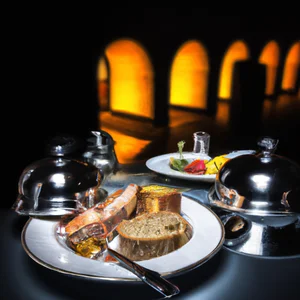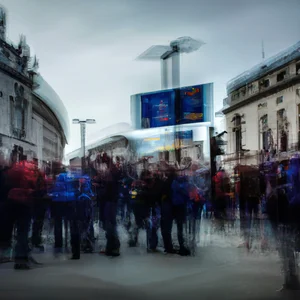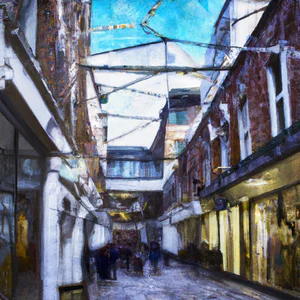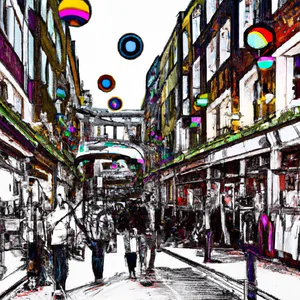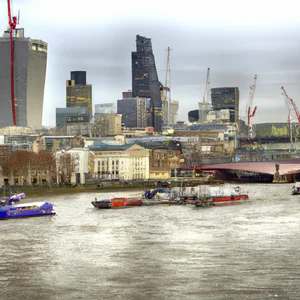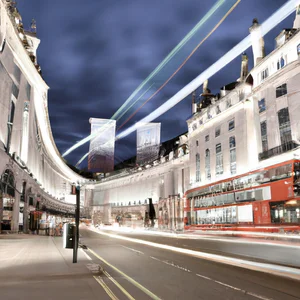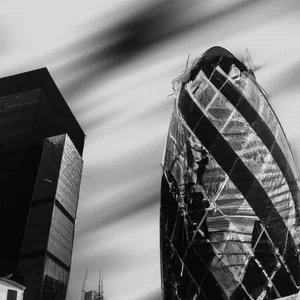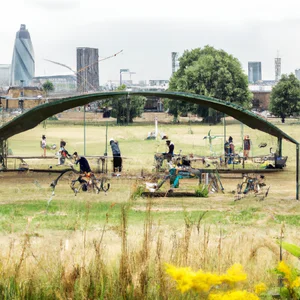Book your experience
Westminster
The Westminster area, the beating heart of the British capital, represents a place full of history, culture and extraordinary architecture. This article aims to guide the reader through ten significant points that tell the richness and complexity of Westminster, an area that is not only a political centre, but also a symbol of democracy and British tradition. We’ll start with iconic architecture, exploring how Westminster’s monuments, with their majestic lines and elaborate detail, tell of centuries of history and change. The Palace of Westminster, with its grandeur, is the fulcrum of political decisions in the United Kingdom and an architectural masterpiece that attracts millions of visitors every year. We cannot then neglect the famous Big Ben, whose sound has become a symbol of London, whose history has its roots in a past era and continues to resonate in the present. Westminster Abbey, the site of royal celebrations and the burial of illustrious figures, represents another cornerstone of Britain’s cultural heritage. Furthermore, Parliament, the fulcrum of democracy, offers a unique opportunity to understand the functioning of institutions. Westminster Gardens and the surrounding museums provide spaces for relaxation and learning, while events and celebrations enliven the social and cultural life of the neighbourhood. Finally, we will not fail to talk about the restaurants and cafes that enrich the gastronomic experience of visitors, and the means of transport that make Westminster accessible to all. With this article, we hope to offer a comprehensive overview of a place that, with its history and dynamism, continues to be an unrivaled landmark for London and the entire world.
Iconic architecture of Westminster
Westminster, located in the heart of London, is famous for its iconic architecture that reflects centuries of British history and culture. This neighborhood is not only a political center, but also a treasure trove of historic buildings that attract millions of visitors every year.
Gothic and neo-Gothic style
One of the most notable aspects of Westminster's architecture is its Gothic and Revival styles. The Palace of Westminster, home of the British Parliament, is an extraordinary example of this style. Its intricate façade, with soaring towers and elaborate detailing, is a symbol of the power and tradition of British government.
The Palace of Westminster
The Palace of Westminster, built in the 13th century and rebuilt after a fire in 1834, is an architectural masterpiece. Its central tower, known as the Clock Tower, houses the famous Big Ben, which has become a symbol not only of Westminster, but of London itself.
Westminster Abbey
Another architectural marvel is Westminster Abbey, an impressive example of Gothic architecture. Founded in 960 AD. and renovated in 1245, the abbey is the coronation site of British monarchs and is home to the graves of many important historical figures. Its imposing facade and decorated interior make it one of the most visited churches in the world.
Distinctive and symbolic elements
In addition to the main buildings, Westminster is dotted with other distinctive architectural elements, such as Westminster Bridge, which offers spectacular views of the Thames and the Palace of Westminster. The bridge, with its Victorian design, is a perfect example of how architecture can blend with the urban landscape.
Conclusion
Westminster's iconic architecture tells a story of power, tradition and culture. Every building, every architectural detail is not just a piece of stone, but a chapter of British history, making this neighborhood an unmissable place for those visiting London.
Palace of Westminster
The Palace of Westminster, also known as the House of Parliament, is one of the most emblematic and recognizable buildings in London. Located on the banks of the River Thames, this magnificent example of Gothic architecture is not only a symbol of the British capital, but also an important political center where the legislative activities of the United Kingdom take place.
History and Architecture
The origins of the Palace of Westminster date back to 1016, when it was built as a royal residence. However, over the centuries, the building has undergone numerous changes and expansions. Most of the current structure was built between 1840 and 1876 after a devastating fire that destroyed much of the original building. The architect Charles Barry, together with Augustus Pugin, designed the building in neo-Gothic style, characterized by slender towers, pointed arches and elaborate decoration.
Main Features
The Palace of Westminster is famous for its towers and intricate ornaments. The central tower, known as the Victoria Tower, is 98 meters high and hosts the flag of the United Kingdom when Parliament is in session. Next to it is the famous Big Ben tower, which, although often associated with the famous clock, is actually the name of the bell that rings inside the tower.
Function and Meaning
Today the Palace of Westminster is the seat of the House of Commons and the House of Lords, the two houses of the British Parliament. This building is not only a workplace for politicians, but also a symbol of democracy and British history. Every year, millions of visitors travel here to explore its historical and political importance, taking guided tours that offer an inside look at government operations.
Visits and Accessibility
The Palace of Westminster is open to visitors, with several tour options available. It is advisable to book in advance, especially during high season. Accessibility is guaranteed for people with reduced mobility, and special services are available for those who require assistance.
Big Ben and its history
Big Ben, one of the most recognizable symbols of London and the whole of Great Britain, is actually the name of the large bell located inside the Clock Tower of the Palace of Westminster. The name "Big Ben" is often used to refer not only to the bell, but also to the entire tower, officially known as the Elizabeth Tower.
Origins and construction
The tower was completed in 1859 and designed by the architect Augustus Pugin in an elegant neo-Gothic style. The original bell, weighing over 13 tons, broke during testing and a new one had to be cast, which was installed in July 1859. The clock mechanism, designed by Edmund Beckett Denison, became famous for its precision and reliability.
The meaning of Big Ben
Big Ben is not just a tourist attraction; it is also a symbol of British stability and resilience. During World War II, the tower suffered damage, but remained standing as a beacon of hope for Londoners. Its presence has been immortalized in countless artistic and cinematic works, making it an emblem of British culture.
Renovations and maintenance
In recent years, the Elizabeth Tower and Big Ben have undergone significant renovations, which began in 2017 and completed in 2021. During these works, the clock was silenced for the first time since 1983, creating a moment of nostalgia for Londoners. The renovations included cleaning the tower, replacing paint and restoring architectural elements.
Visits and curiosities
Big Ben is only accessible to the public via guided tours, which offer a unique opportunity to explore the interior of the tower and learn more about its history. The panoramic view of London from the top is an unforgettable experience. Furthermore, the sound of the bells that ring every hour is a moment awaited by tourists and Londoners, a call that marks the rhythm of life in the capital.
In conclusion, Big Ben is not just a clock; it is a cultural heritage that tells the story of London, its population and its traditions. A trip to Westminster is not complete without a visit to this iconic symbol of British time and history.
Westminster Abbey
Located in the heart of Westminster, Westminster Abbey is one of the most emblematic and significant monuments in the United Kingdom. This extraordinary Gothic church, consecrated in 1065, is not only a place of worship, but also a symbol of British history.
Architecture and Design
The architecture of Westminster Abbey is a magnificent example of Gothic style, characterized by pointed arches, cross vaults and stained glass windows. The main facade is adorned with statues of saints and monarchs, while the famous bell tower stands majestically, offering spectacular views of the city.
History and Function
Over the centuries, the Abbey has hosted numerous historic events, including coronations, royal weddings and state funerals. One of the best-known events is the coronation of Queen Elizabeth II in 1953. The church is also the burial place of many British monarchs and illustrious figures, including Isaac Newton and Charles Darwin.
Visit and Attractions
Visitors to the Abbey can explore different areas, such as the Cloister, the Abbey Garden and the Queen of Martyrs, which hosts commemorative monuments. Furthermore, the Poets' Corner is an area dedicated to British poets and writers, making the Abbey a place of great cultural value.
Accessibility
Westminster Abbey is easily accessible by public transport, with underground and bus stops nearby. It is important to note that although there are facilities for visitors with disabilities, it is advisable to check in advance for any restrictions.
Practical information
For those wishing to visit the Abbey, it is recommended to book tickets in advance, especially during periods of high tourist attendance. The Abbey also offers guided tours, which enrich the experience with historical information and architectural details.
Parliament and Democracy
The Palace of Westminster is not only an architectural masterpiece, but also represents the beating heart of British democracy. The sessions of the House of Commons and the House of Lords take place here, where key decisions are made for the United Kingdom and beyond.
History and Function
Built following a fire in 1834, the Palace of Westminster has become a symbol of democratic governance. Its Gothic architecture, with imposing towers and intricate details, reflects the grandeur of political power. Every day, thousands of visitors come here not only to admire the beauty of the structure, but also to understand the workings of the British political system.
The Legislative Process
Parliament is made up of two chambers: the House of Commons, whose members are directly elected by the people, and the House of Lords, whose members are appointed . Laws are proposed, debated and voted on in these chambers, making Westminster a key place for democratic participation.
Guided Tours and Access
Visitors can take guided tours of Parliament, where they can watch ongoing debates and learn more about its history and legislative functions. It is a unique opportunity to see up close how British democracy works and to understand its impact on the daily lives of citizens.
Special Events
Occasionally, Parliament hosts special events, such as the State Opening of Parliament, during which the Queen delivers a speech outlining the government's legislative priorities. These events attract media and public attention, underlining the importance of the Palace of Westminster in the British political landscape.
In summary, Westminster Parliament is much more than a building; it is a symbol of democracy and a place of civic participation, where the history and future of the United Kingdom intertwine in meaningful and fascinating ways.
Westminster Gardens
The Westminster Gardens are a green oasis in the heart of the British capital, a place where nature is intertwined with the history and culture of London. These gardens offer visitors a peaceful retreat, away from the hustle and bustle of city life, and are a meeting point for residents and tourists.
Main features
Located along the River Thames, the gardens are well landscaped and feature a variety of plants, flowers and trees. Notable features include:
- Tree-lined avenues - Walking through the gardens, you can admire avenues shaded by centuries-old trees, ideal for a relaxing walk.
- Fountains - Decorative fountains add a touch of elegance and serenity to the environment.
- Picnic areas - Various areas are equipped to allow visitors to enjoy an outdoor lunch, immersed in nature.
Activities and events
As well as being a place for peaceful strolls, Westminster Gardens also hosts various events throughout the year, such as open-air concerts and festivals. These events help make the gardens a lively and dynamic point of reference in London's cultural life.
Accessibility
The gardens are easily accessible, thanks to their central location. They are well served by public transport and the facilities are also accessible for people with reduced mobility. The walks and paths are designed to ensure safe and pleasant use for all visitors.
A place of reflection
In addition to its scenic beauty, Westminster Gardens also offers spaces dedicated to reflection and contemplation. You can find memorials honoring historic figures and significant events, making the gardens not only a place of recreation, but also of learning and respect for British history.
Museums and galleries in Westminster
Westminster is a true treasure trove of culture, hosting some of London's most important and fascinating museums and galleries. These institutions not only offer a wide range of exhibitions, but also tell the story and culture of the British capital.
The Museum of London
Located a short distance from Westminster, the Museum of London is dedicated to the history of the city. Its exhibitions range from prehistory to present day, with collections that include archaeological finds, historical artefacts and interactive exhibitions. The museum is an excellent starting point for understanding the historical roots of Westminster and the evolution of London over the centuries.
The National Gallery
Another cultural gem nearby is the National Gallery, which houses one of the largest collections of European art in the world. Featuring works by the likes of Van Gogh, Turner and Botticelli, the gallery is a must-see for art lovers. Its central location makes it easily accessible and offers free entry, making culture accessible to everyone.
The Tate Britain
For lovers of British art, the Tate Britain is a must. This gallery houses a large collection of British art from the 1500s to the present day, including masterpieces by artists such as Turner and Hockney. Tate Britain not only offers permanent exhibitions, but also temporary exhibitions that explore various themes and artistic movements.
The Science Museum in London
Located not far from Westminster, the London Science Museum offers a fascinating exploration of scientific and technological advances. The interactive and engaging exhibits are perfect for families and visitors of all ages, making science accessible and fun. The museum also hosts special events and educational activities throughout the year.
Events and temporary exhibitions
Many of Westminster's museums and galleries hold temporary events and exhibitions that reflect current issues and cultural trends. These events are excellent opportunities to immerse yourself in contemporary culture and see innovative works of art and installations.
In conclusion, Westminster is not only a political and historical center, but also an important cultural hub. The area's museums and galleries offer a wide range of experiences that enrich the visit of tourists and locals alike, making each visit unique and memorable.
Events and Celebrations in Westminster
Westminster, the beating heart of the British capital, is a place rich in history and culture, which hosts numerous events and celebrations throughout the year. These events not only attract tourists from all over the world, but also celebrate local traditions and community life.
Annual Events
Among the main annual events, the Trooping the Colour stands out, a ceremony that marks the Queen's official birthday. This event takes place in June and features a spectacular parade that attracts thousands of spectators. The Remembrance Day is another significant event, where homage is paid to those fallen in war with solemn ceremonies at the War Memorial.
Festivals and Markets
Westminster also hosts a number of cultural festivals and markets throughout the year. The Westminster Food Festival celebrates local gastronomy with tastings and food stands, while the Westminster Arts Festival offers a look at the visual and performing arts, with exhibitions and live performances.
Cultural and Musical Events
The area is also a center for cultural and musical events. Historic theaters such as Palace Theatre and Her Majesty's Theatre present world-famous shows, including hit musicals and stage productions. During the summer, open-air concerts in Westminster Gardens offer a unique atmosphere to enjoy live music in a historic context.
National Celebrations
On special occasions, such as New Year and the Queen's Jubilee, Westminster becomes the focus of celebrations and fireworks. These events attract thousands of visitors, who gather to celebrate and experience the festive atmosphere of the capital.
In summary, Westminster is not only a political centre, but also a vibrant place of events and celebrations, where history and culture intertwine in a unique experience for residents and visitors. Whether it's historic ceremonies, food festivals or open-air concerts, there's always something to discover in this iconic area of London.
Restaurants and cafes in Westminster
Westminster is not only a political and cultural hub, but also offers a vibrant food scene, with a variety of restaurants and cafes to suit every palate. Whether you are looking for a quick lunch, an elegant dinner or a simple coffee to refuel during a walk, you will surely find the right option.
Traditional British cuisine
For an authentic British dining experience, you can visit The Red Lion, a historic pub serving classic dishes such as fish and chips and shepherd's pie. Its welcoming atmosphere and historic decorations make it an ideal place to enjoy a meal after visiting the Palace of Westminster.
International restaurants
Westminster is also a melting pot of culinary cultures. Siematic, for example, offers excellent Asian cuisine with a varied menu that ranges from ravioli to curry dishes. For those who love Italian cuisine, Caravaggio is a highly appreciated restaurant that offers delicious homemade pasta and authentic Neapolitan pizzas.
Cafes and pastry shops
If you need a coffee break, Bookstore Café is the perfect place. Located inside a bookshop, it offers a selection of artisanal coffees and fresh pastries, making it an ideal place for a quiet break. Another option is GAIL's Bakery, famous for its selection of artisan breads and delicious pastries.
Vegetarian and vegan options
For those looking for healthier options, Wild Food Café is renowned for its vegetarian and vegan dishes, prepared with fresh, sustainable ingredients. This choice is perfect for those who want a light meal without compromising on taste.
Unique culinary experiences
Finally, don't miss the opportunity to try the Afternoon Tea in one of the many luxury hotels in Westminster, such as the Hotel Café Royal or the Waldorf Hilton. This British tradition is the perfect combination of fine tea, delicate sandwiches and exquisite desserts, all served in an elegant atmosphere.
In summary, Westminster offers a wide range of restaurants and cafes, catering to all tastes and budgets, making the dining experience an integral part of a visit to this historic area of London.
Transport and accessibility in Westminster
Westminster is one of the most accessible areas of London, thanks to its excellent public transport network and its central location. Visitors can easily get around by both public transport and on foot, making discovering this historic area a pleasant and convenient experience.
London Underground
The London Underground is one of the most efficient means of transport to reach Westminster. The stops at Westminster, St. James's Parkand Victoria offer direct connections to other parts of the city. The Westminster stop is particularly convenient, as it is within walking distance of the Palace of Westminster, Big Ben and Westminster Abbey.
Bus
London's bus network is equally well developed. Several bus lines serve the Westminster area, offering a pleasant alternative to exploring the city. The red double-decker buses are an icon of London and offer panoramic views during the journey.
Bicycles and Walking
Westminster is a very pedestrian-friendly area and favors the use of bicycles. There are numerous cycling routes and bike rental stations, such as the Boris Bike system, which allow you to explore the area in a sustainable way. Furthermore, many of the main attractions are within easy walking distance, making the experience even more immersive.
Accessibility for People with Reduced Mobility
Most tube and bus stations in Westminster are equipped with facilities for people with reduced mobility. Major stops offer elevators and ramps for easy access. Furthermore, many of the historic monuments and attractions are accessible, with dedicated services to ensure that everyone can enjoy the beauty of Westminster.
Parking and Private Transport
For those traveling by car, there are several paid parking options in the Westminster area, but it is advisable to book in advance, especially during peak periods. tourist influx. Additionally, ridesharing services such as Uber are readily available, offering a convenient way to get around.
In summary, the Westminster area is well connected and easily accessible, making a visit to this beating heart of British history and politics a hassle-free experience for all visitors.

 Architecture and Design
Architecture and Design Cities and Regions
Cities and Regions Culture and History
Culture and History Events and Festivals
Events and Festivals Fashion and Shopping
Fashion and Shopping Food and Wine
Food and Wine Nature and Adventure
Nature and Adventure Unique Experiences
Unique Experiences



















